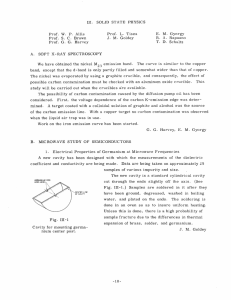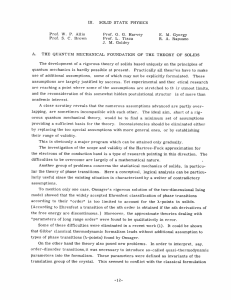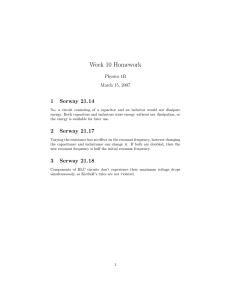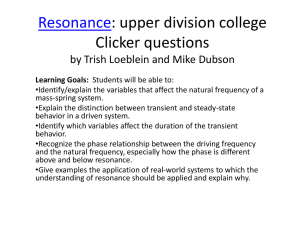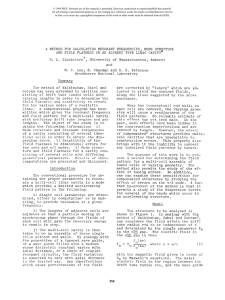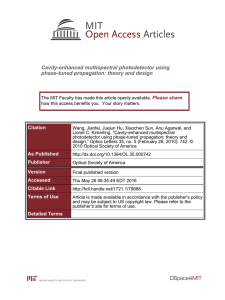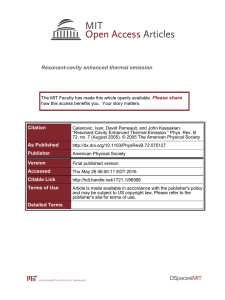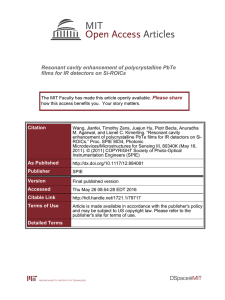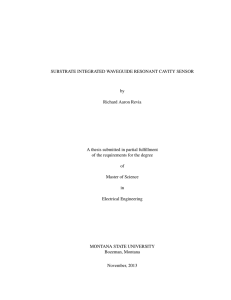III. SOLID STATE PHYSICS
advertisement
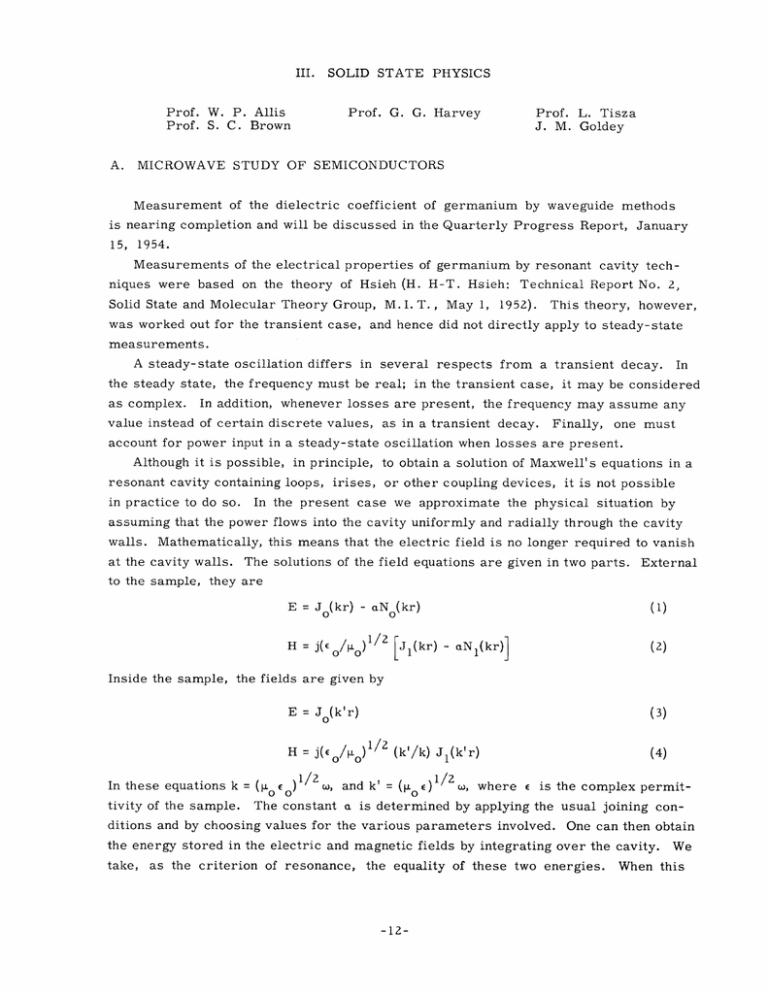
III. SOLID STATE PHYSICS Prof. W. P. Allis Prof. S. C. Brown A. Prof. G. G. Harvey Prof. L. Tisza J. M. Goldey MICROWAVE STUDY OF SEMICONDUCTORS Measurement of the dielectric coefficient of germanium by waveguide methods is nearing completion and will be discussed in the Quarterly Progress Report, January 15, 1954. Measurements of the electrical properties of germanium by resonant cavity tech- niques were based on the theory of Hsieh (H. H-T. Hsieh: Solid State and Molecular Theory Group, M. I. T., Technical Report No. 2, May 1, 1952). This theory, however, was worked out for the transient case, and hence did not directly apply to steady-state measurements. A steady-state oscillation differs in several respects from a transient decay. In the steady state, the frequency must be real; in the transient case, it may be considered as complex. In addition, whenever losses are present, the frequency may assume any value instead of certain discrete values, as in a transient decay. Finally, one must account for power input in a steady-state oscillation when losses are present. Although it is possible, in principle, to obtain a solution of Maxwell's equations in a resonant cavity containing loops, irises, in practice to do so. or other coupling devices, it is not possible In the present case we approximate the physical situation by assuming that the power flows into the cavity uniformly and radially through the cavity walls. Mathematically, this means that the electric field is no longer required to vanish at the cavity walls. The solutions of the field equations are given in two parts. External to the sample, they are E = Jo(kr) - aNo(kr) (1) /0o) (2) H = j(E 2 [J1(kr) - aNl(kr)] Inside the sample, the fields are given by E = Jo(k'r) H = j(E In these equations k = (E tivity of the sample. )1/2 / (3) ) 1/2 (k'/k) J 1 (k'r) , and k' = ( E)1/2 (4) w, where E is the complex permit- The constant a is determined by applying the usual joining con- ditions and by choosing values for the various parameters involved. One can then obtain the energy stored in the electric and magnetic fields by integrating over the cavity. take, as the criterion of resonance, the equality of these two energies. -12- We When this (III. SOLID STATE PHYSICS) C Fig. III-1 Suggested equivalent circuit for resonant cavity containing lossy center post. g, represents wall losses and g' represents sample losses. condition is applied, we obtain a transcendental equation which can only be solved by a trial-and-error method. As a result, this equation is not of great practical use in itself. However, a few solutions for various values of the parameters were obtained, and the resonant frequencies were compared with those obtained by Hsieh for the same values of the parameters. We find that there is a definite relation between the two frequencies whenever Q. lies between oc and 30. The frequencies are related as follows: 5 4r Q 5/2 s where ws is the steady-state resonant frequency and wr is the real part of the complex frequency in the transient case. Equation 5 suggests the equivalent circuit of Fig. III-1 for a resonant cavity with a lossy center post. The relation between the transient decay and steady-state resonant frequencies for this circuit is the same as that given in Eq. 5. J. M. Goldey -13-
